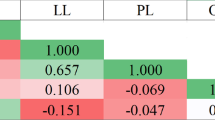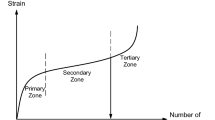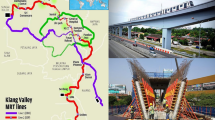Abstract
The prediction of asphalt performance can be very important in terms of increasing service life and performance while saving energy and money. In this study, a new hybrid artificial intelligence (AI) system, SOS–LSSVR, has been proposed to predict the permanent deformation potential of asphalt pavement mixtures. SOS–LSSVR utilizes the symbiotic organisms search (SOS) and the least squares support vector regression (LSSVR), which are seen as a complementary system. The prediction model can be established from all input and output data pairs for LSSVR, while SOS optimizes the system’s tuning parameters. To avoid sampling bias and to partition the dataset into testing and training, a cross-validation technique was chosen. The results can be compared to those of previous studies and other predictive methods. Through the use of four error indicators, SOS–LSSVR accuracy was verified in predicting the permanent deformation behavior of an asphalt mixture. The present study demonstrates that the proposed AI system is a valuable decision-making tool for road designers. Additionally, the success of SOS–LSSVR in building an accurate prediction model suggests that the proposed self-optimized prediction framework has found an underlying pattern in the current database and thus can potentially be implemented in various disciplines.



Similar content being viewed by others
References
Kaloush KE (2001) Simple performance test for permanent deformation of asphalt mixtures. Ph.D. thesis, Arizona State University
Sousa JB, Craus J, Monismith C (1991) Summary report on permanent deformation in asphalt concrete. Strategic Highway Research Program (SHRP), National Research Council, Institute of Transportation Studies, University of California, Berkeley
Liao S-H, Chu P-H, Hsiao P-Y (2012) Data mining techniques and applications—a decade review from 2000 to 2011. Expert Syst Appl 39(12):11303–11311. https://doi.org/10.1016/j.eswa.2012.02.063
Cheng M-Y, Prayogo D (2014) Symbiotic organisms search: a new metaheuristic optimization algorithm. Comput Struct 139:98–112. https://doi.org/10.1016/j.compstruc.2014.03.007
Cheng M-Y, Wibowo DK, Prayogo D, Roy AFV (2015) Predicting productivity loss caused by change orders using the evolutionary fuzzy support vector machine inference model. J Civ Eng Manag 21(7):881–892. https://doi.org/10.3846/13923730.2014.893922
Hoang N-D, Tien Bui D, Liao K-W (2016) Groutability estimation of grouting processes with cement grouts using differential flower pollination optimized support vector machine. Appl Soft Comput 45:173–186. https://doi.org/10.1016/j.asoc.2016.04.031
Cheng M-Y, Prayogo D, Ju Y-H, Wu Y-W, Sutanto S (2016) Optimizing mixture properties of biodiesel production using genetic algorithm-based evolutionary support vector machine. Int J Green Energy 13(15):1599–1607. https://doi.org/10.1080/15435075.2016.1206549
Helmy T, Hossain MI, Adbulraheem A, Rahman SM, Hassan MR, Khoukhi A, Elshafei M (2017) Prediction of non-hydrocarbon gas components in separator by using hybrid computational intelligence models. Neural Comput Appl 28(4):635–649. https://doi.org/10.1007/s00521-015-2088-4
Christopher WR, J. RC, Bausano J, Breakah T (2007) Testing of wisconsin asphalt mixtures for the forthcoming AASHTO 2002 mechanistic-empirical pavement design procedure. Wisconsin Highway Research Program
Witczak MW, Kaloush KE, Pellinen T, El-Basyouny M, Von Quintus H (2002) Simple performance test for superpave mix design, vol 465. NCHRP Report
Gandomi AH, Alavi AH, Mirzahosseini MR, Nejad FM (2011) Nonlinear genetic-based models for prediction of flow number of asphalt mixtures. J Mater Civ Eng 23(3):248–263. https://doi.org/10.1061/(asce)mt.1943-5533.0000154
Alavi AH, Ameri M, Gandomi AH, Mirzahosseini MR (2011) Formulation of flow number of asphalt mixes using a hybrid computational method. Constr Build Mater 25(3):1338–1355. https://doi.org/10.1016/j.conbuildmat.2010.09.010
Mirzahosseini MR, Aghaeifar A, Alavi AH, Gandomi AH, Seyednour R (2011) Permanent deformation analysis of asphalt mixtures using soft computing techniques. Expert Syst Appl 38(5):6081–6100. https://doi.org/10.1016/j.eswa.2010.11.002
Suykens JAK, Vandewalle J (1999) Least squares support vector machine classifiers. Neural Process Lett 9(3):293–300. https://doi.org/10.1023/a:1018628609742
Suykens JAK, Lukas L, Vandewalle J Sparse approximation using least squares support vector machines. In: The 2000 IEEE international symposium on circuits and systems, 2000. Proceedings, vol 752. ISCAS 2000 Geneva, pp 757–760. https://doi.org/10.1109/iscas.2000.856439
Pham A-D, Hoang N-D, Nguyen Q-T (2015) Predicting compressive strength of high-performance concrete using metaheuristic-optimized least squares support vector regression. J Comput Civ Eng. https://doi.org/10.1061/(asce)cp.1943-5487.0000506
Tran D-H, Cheng M-Y, Prayogo D (2016) A novel multiple objective symbiotic organisms search (MOSOS) for time–cost–labor utilization tradeoff problem. Knowl Based Syst 94:132–145. https://doi.org/10.1016/j.knosys.2015.11.016
Tejani GG, Savsani VJ, Patel VK (2016) Adaptive symbiotic organisms search (SOS) algorithm for structural design optimization. J Comput Des Eng. https://doi.org/10.1016/j.jcde.2016.02.003
Kamankesh H, Agelidis VG, Kavousi-Fard A (2016) Optimal scheduling of renewable micro-grids considering plug-in hybrid electric vehicle charging demand. Energy 100:285–297. https://doi.org/10.1016/j.energy.2016.01.063
Duman S (2016) Symbiotic organisms search algorithm for optimal power flow problem based on valve-point effect and prohibited zones. Neural Comput Appl. https://doi.org/10.1007/s00521-016-2265-0
Verma S, Saha S, Mukherjee V (2015) A novel symbiotic organisms search algorithm for congestion management in deregulated environment. J Exp Theor Artif Intell. https://doi.org/10.1080/0952813X.2015.1116141
Kulkrni KS, Kim D-K, Sekar SK, Samui P (2011) Model of least square support vector machine (LSSVM) for prediction of fracture parameters of concrete. Int J Concr Struct Mater 5(1):29–33. https://doi.org/10.4334/ijcsm.2011.5.1.029
Siddique N, Adeli H (2016) Brief history of natural sciences for nature-inspired computing in engineering. J Civ Eng Manag 22(3):287–301. https://doi.org/10.3846/13923730.2016.1157095
Boussaïd I, Lepagnot J, Siarry P (2013) A survey on optimization metaheuristics. Inf Sci 237:82–117. https://doi.org/10.1016/j.ins.2013.02.041
Cheng M-Y, Chiu C-K, Chiu Y-F, Wu Y-W, Syu Z-L, Prayogo D, Lin C-H (2014) SOS optimization model for bridge life cycle risk evaluation and maintenance strategies. J Chin Inst Civ Hydraul Eng 26(4):293–308
Ayala HVH, Klein CE, Mariani VC, Coelho LDS (2017) Multiobjective symbiotic search algorithm approaches for electromagnetic optimization. IEEE Trans Magn 53(6):1–4. https://doi.org/10.1109/tmag.2017.2665350
Panda A, Pani S (2016) A Symbiotic Organisms Search algorithm with adaptive penalty function to solve multi-objective constrained optimization problems. Appl Soft Comput 46:344–360. https://doi.org/10.1016/j.asoc.2016.04.030
Yu VF, Redi AANP, Yang C-L, Ruskartina E, Santosa B (2017) Symbiotic organisms search and two solution representations for solving the capacitated vehicle routing problem. Appl Soft Comput 52:657–672. https://doi.org/10.1016/j.asoc.2016.10.006
Cheng MY, Prayogo D, Tran DH (2016) Optimizing multiple-resources leveling in multiple projects using discrete symbiotic organisms search. J Comput Civil Eng 30(3):04015036. https://doi.org/10.1061/(asce)cp.1943-5487.0000512
Kenan Dosoglu M, Guvenc U, Duman S, Sonmez Y, Tolga Kahraman H (2016) Symbiotic organisms search optimization algorithm for economic/emission dispatch problem in power systems. Neural Comput Appl. https://doi.org/10.1007/s00521-016-2481-7
Verma M, Thirumalaiselvi A, Rajasankar J (2016) Kernel-based models for prediction of cement compressive strength. Neural Comput Appl. https://doi.org/10.1007/s00521-016-2419-0
Cheng M-Y, Prayogo D, Wu Y-W (2014) Novel genetic algorithm-based evolutionary support vector machine for optimizing high-performance concrete mixture. J Comput Civ Eng 28(4):06014003. https://doi.org/10.1061/(asce)cp.1943-5487.0000347
Hsu CW, Chang CC, Lin CJ (2003) A practical guide to support vector classification. https://www.citeulike-article-id:560445
Bishop CM (2006) Pattern recognition and machine learning (information science and statistics). Springer, New York Inc
Mirzahosseini M, Najjar Y, Alavi A, Gandomi A (2015) Next-generation models for evaluation of the flow number of asphalt mixtures. Int J Geomech 15(6):04015009. https://doi.org/10.1061/(ASCE)GM.1943-5622.0000483
Chang C-C, Lin C-J (2011) LIBSVM: a library for support vector machines. ACM Trans Intell Syst Technol 2(3):1–27. https://doi.org/10.1145/1961189.1961199
Rumelhart DE, Hinton GE, Williams RJ (1986) Learning representations by back-propagating errors. Nature 323(6088):533–536
Cao M-T, Cheng M-Y, Wu Y-W (2015) Hybrid computational model for forecasting Taiwan construction cost index. J Constr Eng Manag 141(4):04014089. https://doi.org/10.1061/(ASCE)CO.1943-7862.0000948
Chou J-S, Ngo N-T (2016) Engineering strength of fiber-reinforced soil estimated by swarm intelligence optimized regression system. Neural Comput Appl. https://doi.org/10.1007/s00521-016-2739-0
Tien Bui D, Pham BT, Nguyen QP, Hoang N-D (2016) Spatial prediction of rainfall-induced shallow landslides using hybrid integration approach of least-squares support vector machines and differential evolution optimization: a case study in Central Vietnam. Int J Digit Earth 9(11):1077–1097. https://doi.org/10.1080/17538947.2016.1169561
Demuth H, Beale M, Hagan M (2008) Neural network toolbox 6: user’s guide. The MathWorks Inc, Natick
Author information
Authors and Affiliations
Corresponding author
Ethics declarations
Conflict of interest
The authors declare that they have no conflict of interest.
Rights and permissions
About this article
Cite this article
Cheng, MY., Prayogo, D. & Wu, YW. Prediction of permanent deformation in asphalt pavements using a novel symbiotic organisms search–least squares support vector regression. Neural Comput & Applic 31, 6261–6273 (2019). https://doi.org/10.1007/s00521-018-3426-0
Received:
Accepted:
Published:
Issue Date:
DOI: https://doi.org/10.1007/s00521-018-3426-0




